Abstract
The single-larva survey method was employed to study the breeding places and seasonal incidence of Aedes aegypti in Dar es Salaam, Tanzania. From May 1968 to May 1969, 28 462 containers of water—located in approximately equal numbers indoors and outdoors—were investigated. The highest frequency of breeding (8.0%) of A. aegypti was observed in tires and motor parts. Drums, barrels, water-pots, and other receptacles left outdoors showed a higher frequency (3.1%) than those kept indoors (0.6%). Metal containers were infested to a greater extent than those made of mud, wood, or other materials; 2.5% of coconut shells, snail shells, etc. and 1.3% of tree holes, plant axils, and cut bamboos were infested. The seasonal prevalence, expressed as a container index, closely followed and paralleled the fluctuations in rainfall. The value of this survey method for both ecological studies and practical control purposes is discussed.
Full text
PDF

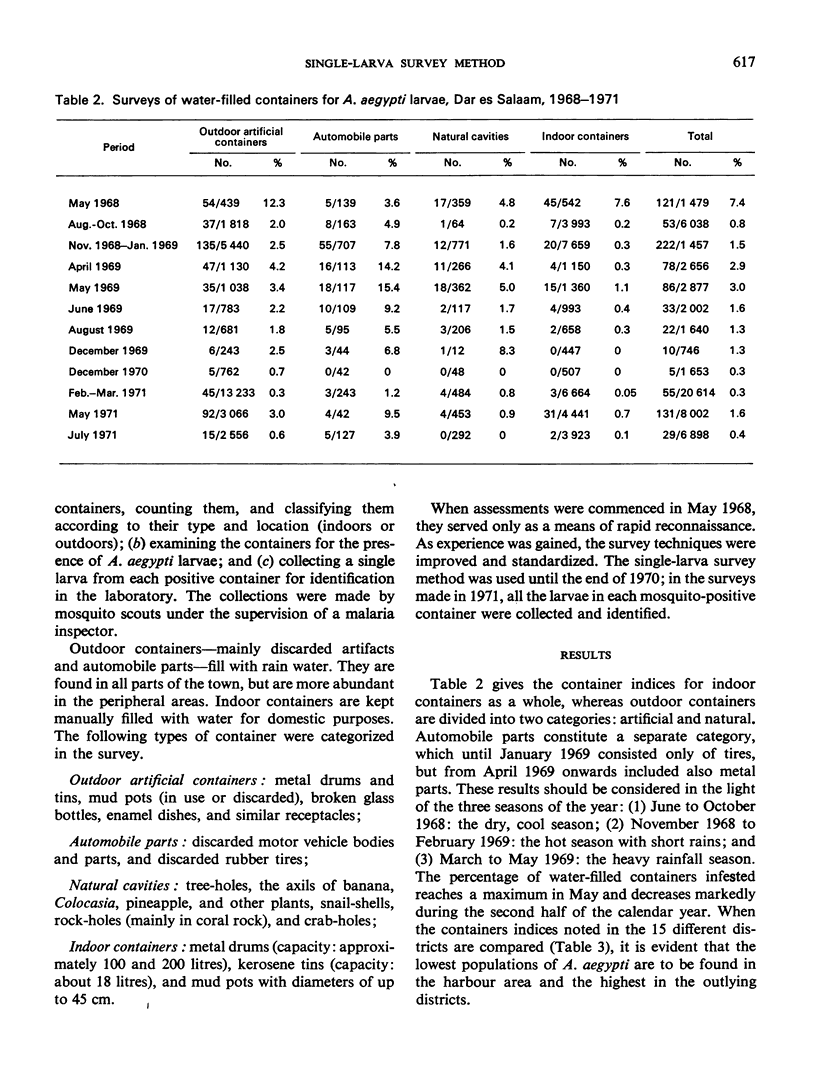

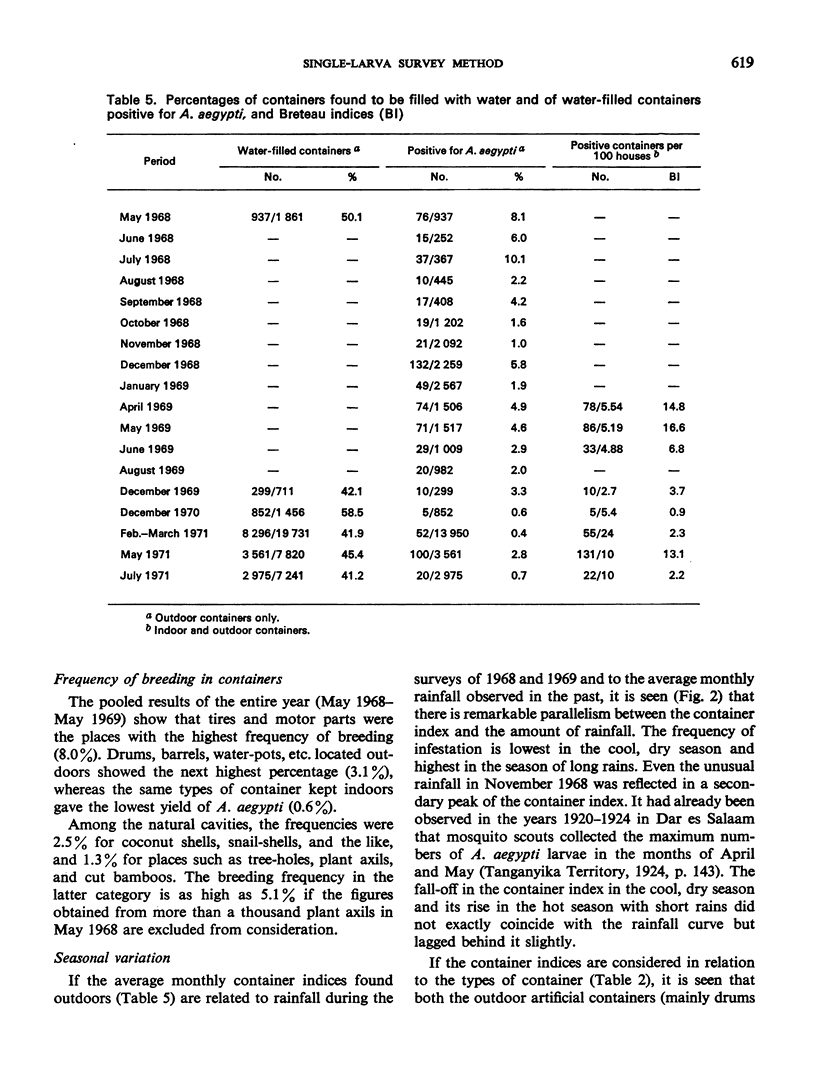
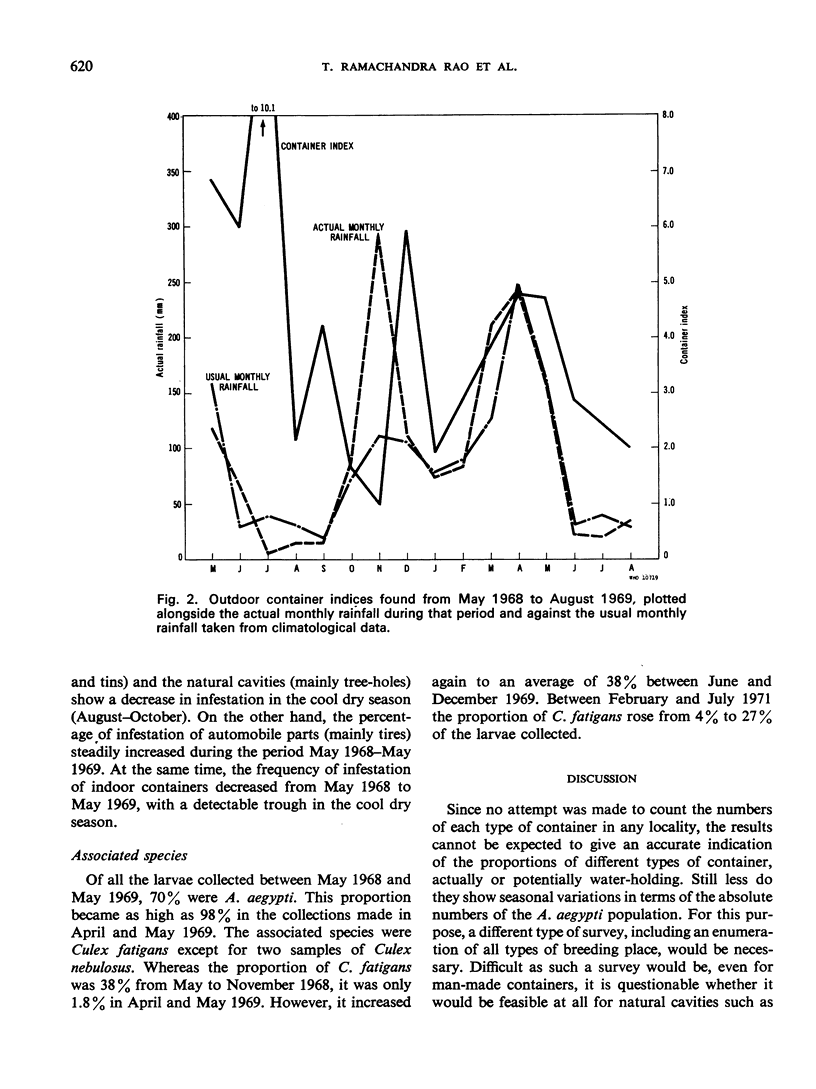
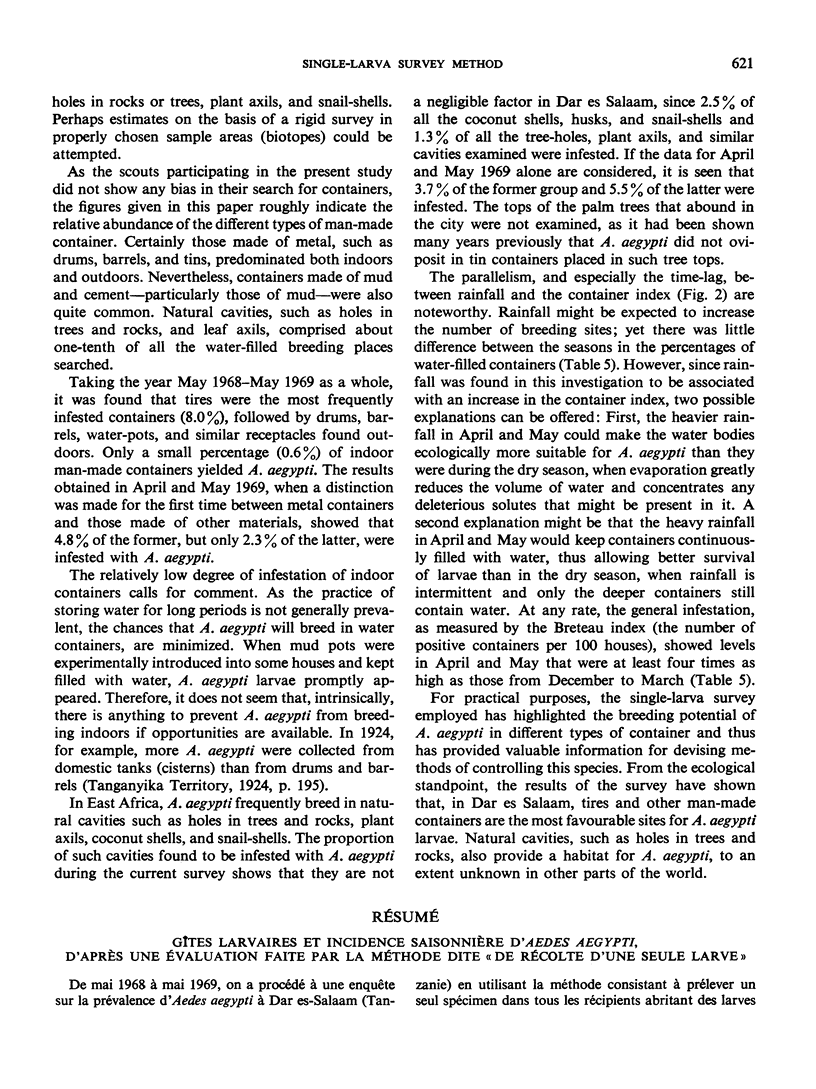
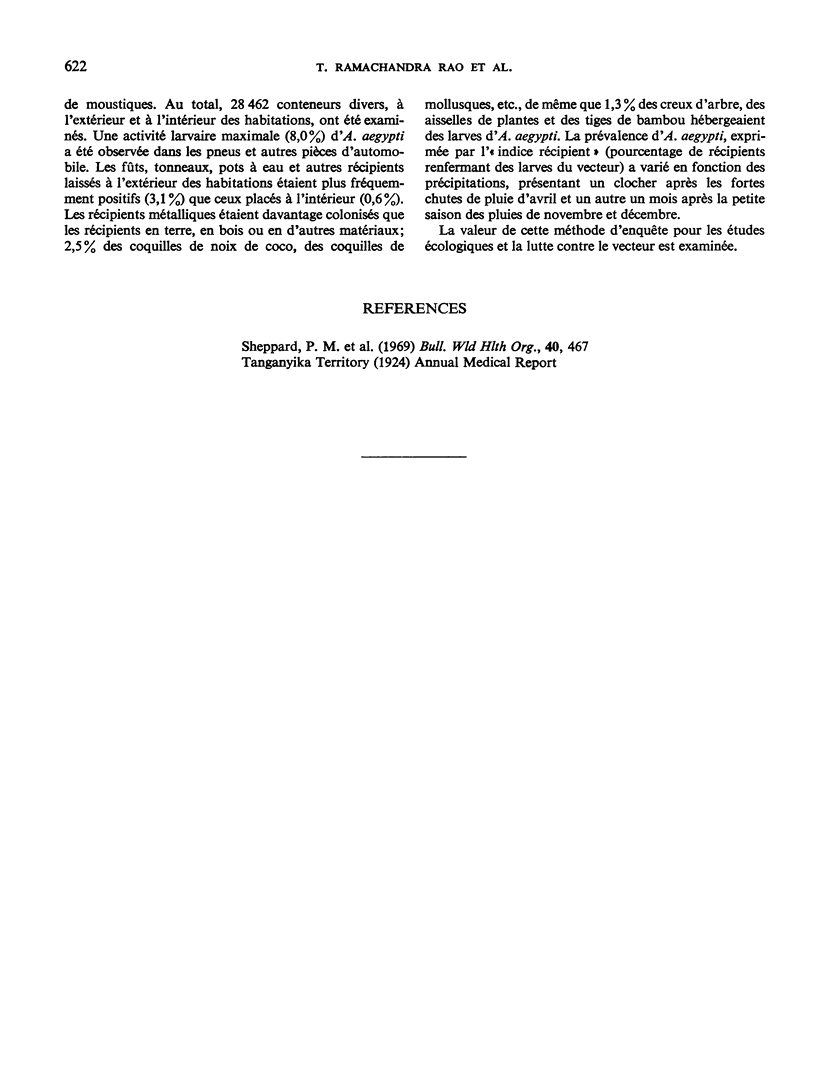
Selected References
These references are in PubMed. This may not be the complete list of references from this article.
- Sheppard P. M., Macdonald W. W., Tonn R. J. A new method of measuring the relative prevalence of Aedes aegypti. Bull World Health Organ. 1969;40(3):467–468. [PMC free article] [PubMed] [Google Scholar]


